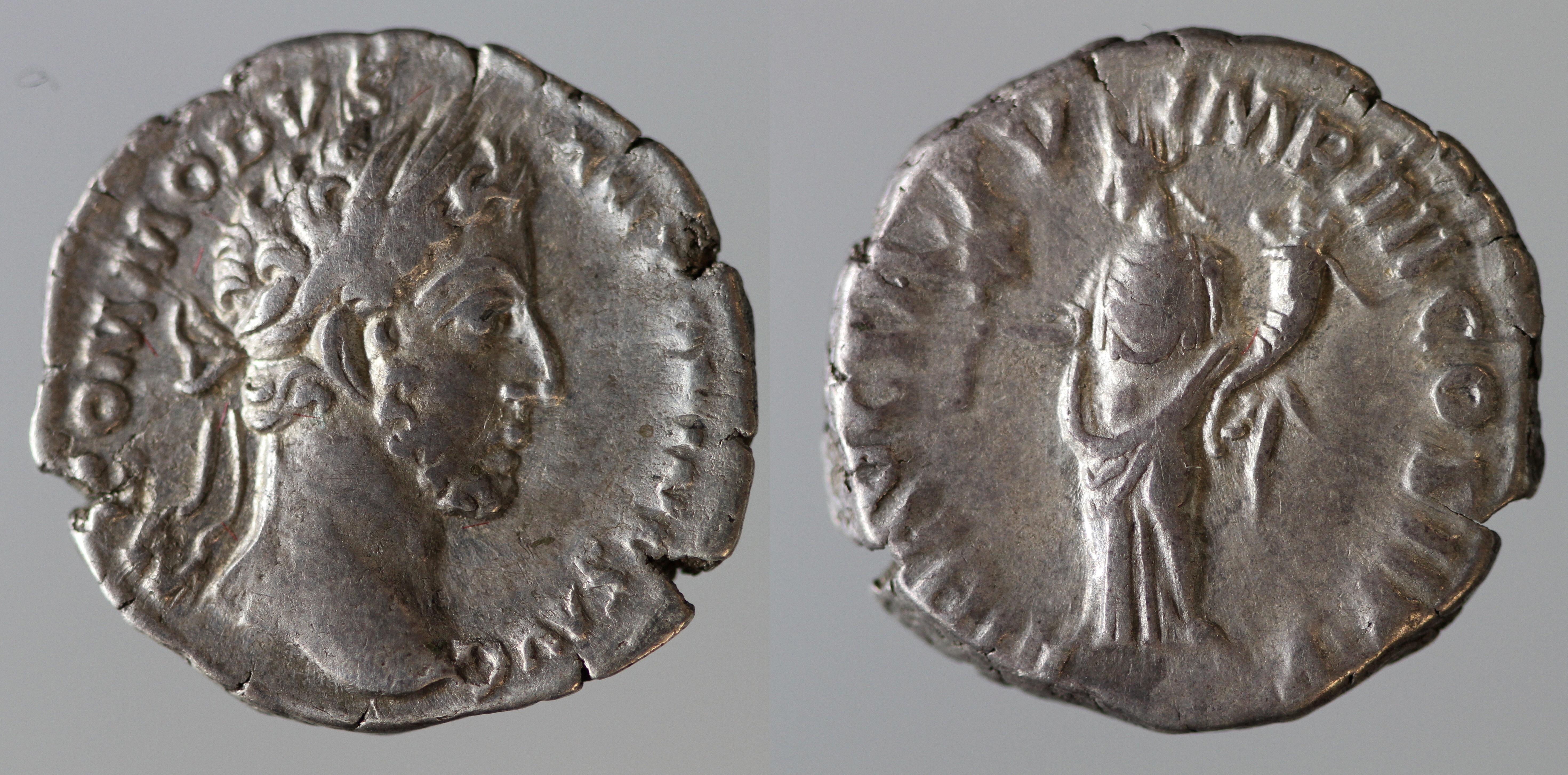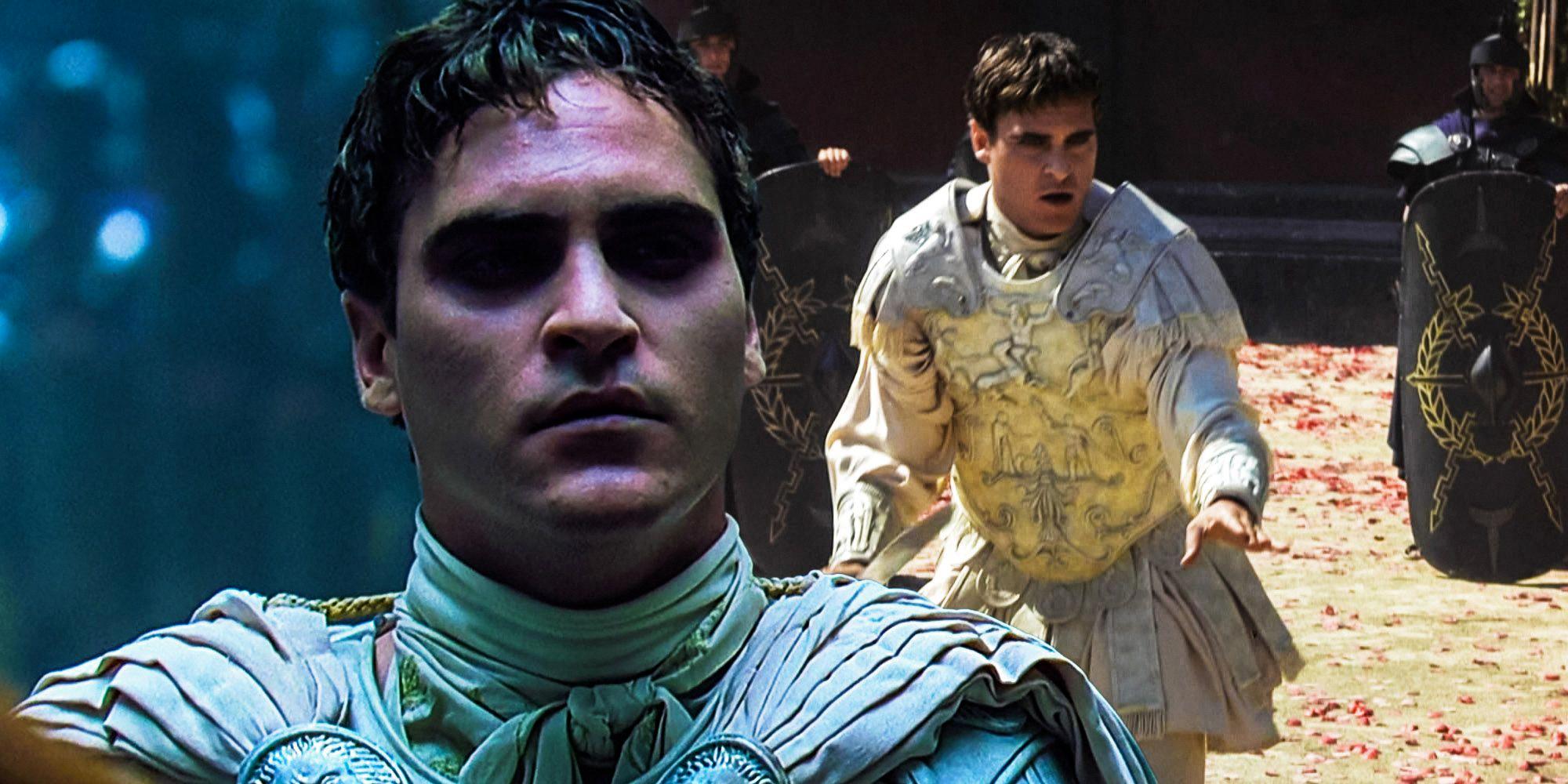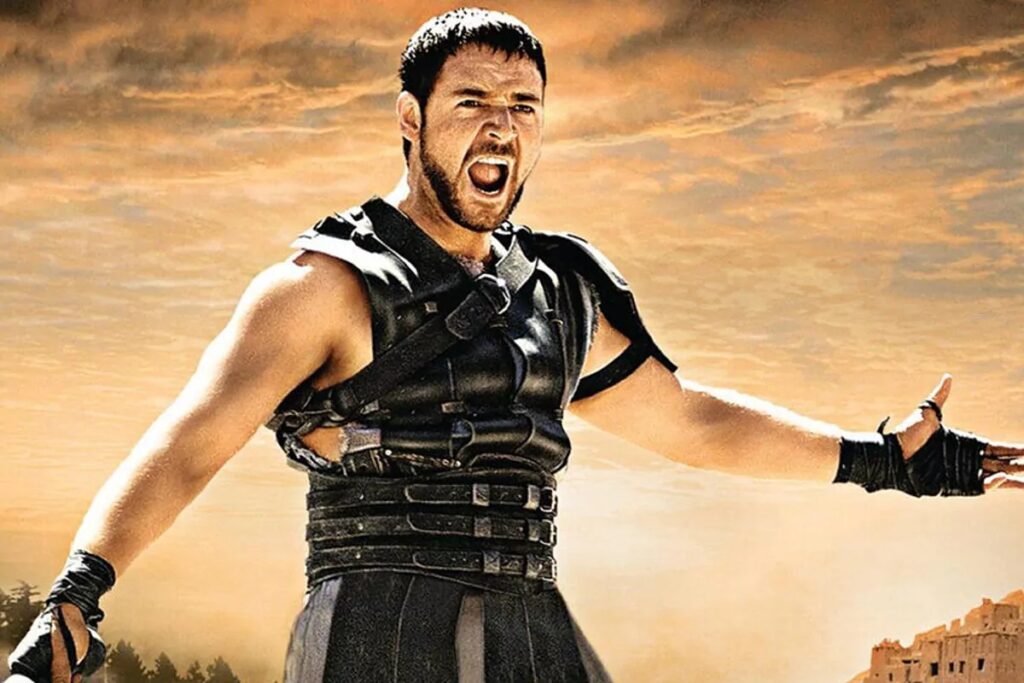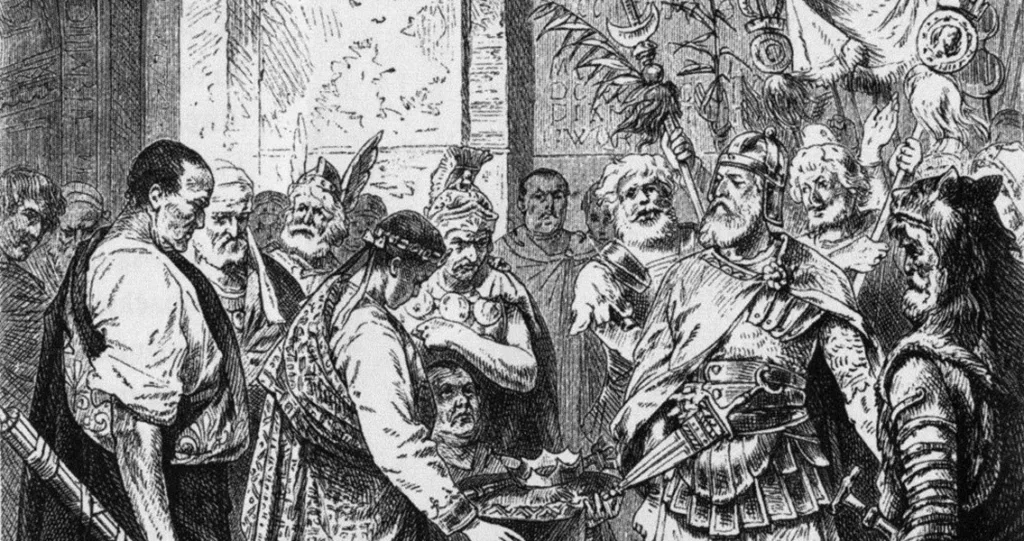Emperor Commodus, infamous for his extravagance and erratic behavior, met his demise on December 31, 192. The events leading up to his death are shrouded in mystery, but many historians agree that his own advisers were responsible for his untimely end.
Commodus had announced his intention to assume the consulship while dressed as a gladiator, a move that was seen as both disrespectful and dangerous by his advisers. The day before his scheduled appearance, he had a heated discussion with his advisers, which may have sealed his fate.
On December 31, Commodus was strangled by a champion wrestler, who was likly hired by his own advisers. The wrestler, named Narcissus, was reportedly promised a large sum of money in exchange for his services.
Commodus’ death marked the end of a tumultuous reign that had been marked by violence, corruption, and unrest. His death was met with mixed reactions from the Roman people, some of whom were relieved to be rid of such a cruel and unpredictable leader, while others mourned the loss of their emperor.
The aftermath of Commodus’ death was also chaotic, as several individuals vied for the throne. Ultimately, an elderly senator named Pertinax was chosen as the new emperor, but his reign was short-lived due to the resentment he created through his reforms.
In the end, the death of Commodus marked the end of an era in Roman history and paved the way for a new chapter in the empire’s storied past. Though his reign was marked by controversy and chaos, his legacy continues to fascinate scholars and historians alike.
The Death of Commodus: Was He a Gladiator?
Commodus, the Roman Emperor who ruled from 180 to 192 AD, did not die as a gladiator. However, he did have plans to assume the consulship, dressed as a gladiator, on January 1, 193 AD. This decision did not sit well with his advisers, who feared that such a display would diminish the dignity of the office. As a result, on December 31, 192 AD, Commodus was strangled by a champion wrestler, who was likely acting on the orders of his advisers.
It is worth noting that Commodus was known to be a fan of gladiatorial games and often participated in them himself. He even went so far as to rename Rome afer himself and called it “Colonia Commodiana” in an effort to associate himself with the gladiatorial games. However, his death was not a result of his participation in these games, but rather a political maneuver by his advisers who were discontent with his leadership.
While Commodus did not die as a gladiator, his love for the games and his plans to dress as one while assuming the consulship highlight his fascination with gladiatorial combat and the role it played in Roman society.

Source: blogs.nottingham.ac.uk
The Fate of Maximus After Killing Commodus
Maximus did die after killing Commodus in the movie “Gladiator”. After his victory in the gladiatorial combat aganst Commodus, Maximus was offered the position of Emperor by the Praetorian Guard. However, he refused and instead asked for the restoration of the Roman Republic. Maximus then succumbed to his injuries and died on the floor of the arena.
It is worth noting that the death of Maximus has been a subject of debate among the viewers of the movie. Some argue that Maximus could have survived his injuries as he was seen being carried out of the arena by his fellow gladiators. However, the general consensus is that Maximus died in the arena, fulfilling his wish for the restoration of the Republic.
In the aftermath of Maximus’ death, Senator Gracchus was reinstated and the Roman Republic was restored. This marked the end of the reign of the tyrannical Commodus and the beginning of a new era of democratic rule in Rome.
The Emperor During the Time of Jesus’ Death
When Jesus of Nazareth was executed, the Roman Empire was under the rule of Emperor Tiberius. Tiberius was the second Roman Emperor and succeeded Augustus, who was the first Emperor of Rome. He ruled from 14 AD to 37 AD, which means that he was the reigning emperor when Jesus was crucified.
During Tiberius’ reign, the Roman Empire expanded and strengthened its hold on the Mediterranean world. Tiberius was known for his military campaigns and his efforts to reform Rome’s financial system. He was also known for his authoritarian rule and his paranoia, which led to the persecution of many individuals during his reign.
Pontius Pilate, the Roman governor of Judaea province, was the one who authorized the execution of Jesus. Pilate was appointed by Tiberius and was responsible for maintaining order in the province. His decision to crucify Jesus was likely influenced by the pressure he faced from the Jewish religious leaders, who saw Jesus as a threat to ther authority.
Tiberius was the Roman Emperor when Jesus was executed, and Pontius Pilate was the Roman governor who authorized his crucifixion.
The Successor to Emperor Commodus
After the death of Commodus, the Roman Empire was left without a clear successor. However, the Senate eventually chose Pertinax, an elderly senator, to beome the next emperor. He was known for his strict discipline and efforts to reform the corrupt and inefficient government. Some of his reforms included reducing military spending and cutting back on the privileges of the Praetorian Guard, the elite soldiers who protected the emperor.
Despite his intentions, Pertinax’s reign was short-lived. His strictness and attempts at reform were met with resentment by many, including the Praetorian Guard. Just three months after his ascension to the throne, he was assassinated by the Praetorian Guard, who then auctioned off the position of emperor to the highest bidder. This led to a period of chaos and civil war known as the Year of the Five Emperors, before the eventual rise of Septimius Severus as the new emperor.
The Greatest Gladiator of All Time
When it comes to the greatest gladiator of all time, there are several contenders, but one name stands out: Spartacus. Born in Thrace, modern-day Bulgaria, in 111 BC, Spartacus was captured by the Romans and sold into slavery. He was trained as a gladiator, a profession that involved fighting to the death in front of cheering crowds.
Spartacus was knwn for his exceptional strength, agility, and intelligence, which made him a formidable opponent in the arena. However, his most significant accomplishment came in 73 BC when he led a massive slave rebellion against the Roman Republic.
Spartacus and his followers managed to defeat several Roman armies and gain the support of other slaves and free people throughout Italy. However, after two years of fighting, Spartacus was finally defeated in battle, and he and his followers were crucified along the Appian Way, a famous Roman road.
Despite his eventual defeat, Spartacus became a symbol of resistance and freedom for people throughout history. His story has inspired countless books, films, and television shows, and his legacy continues to live on today.
While there were many great gladiators throughout history, Spartacus stands out for his exceptional skills as a fighter and his leadership in the slave rebellion against the Roman Republic.

Source: screenrant.com
The Evilest Roman Emperor
When it comes to identifying the evilest Roman emperor, there are several contenders throughout history. However, one name that often comes to mind is that of Commodus. He ruled over the Roman Empire from 180 AD to 192 AD, and his reign was marked by violence, cruelty, and excess.
Commodus was the son of the great emperor Marcus Aurelius, but he was nothing like his father. He was a self-indulgent ruler who was more interested in pleasure and luxury than in governing the empire. He spent much of his time engaging in gladiatorial games, often killing animals and even people in the arena.
Commodus was also known for his sadistic tendencies. He would have people tortured and killed for no reason, often just for his own amusement. He even declared himsef to be a god, and demanded that he be worshipped by his subjects.
Commodus was not only cruel, but he was also delusional. He believed that he was a reincarnation of the god Hercules, and he would often dress up in a lion-skin cape and carry a club around with him. He also renamed Rome after himself, calling it the “Colonia Commodiana.”
Commodus was one of the most evil and despotic rulers in Roman history. His reign was marked by violence, cruelty, and excess, and his legacy has lived on as a cautionary tale of the dangers of absolute power.
The Execution of Maximus
Maximus, the loyal and brave General of the Roman Army, was executed by the power-hungry and jealous son of Marcus Aurelius, Commodus. Commodus killed his own father with the intention of securing his claim to the throne and becoming the new emperor of Rome. However, Marcus Aurelius had planned to name Maximus as his successor, intending to restore the power of the Roman Senate.
Commodus saw Maximus as a threat to his claim to the throne, and so he ordered his execution. Maximus was a highly respected leader among the Roman Army and had gained immense popularity among the people of Rome, which could have made him a potential rival to Commodus’ power. By executing Maximus, Commodus eliminated any possibility of him beng a threat to his reign.
Maximus was a man of honor and had always remained loyal to Marcus Aurelius and his vision for Rome. However, his loyalty and popularity ultimately led to his downfall, as Commodus saw him as a threat to his power. Despite his execution, Maximus remained a symbol of honor and bravery among the people of Rome, who continued to remember him and his legacy for generations to come.
The Murder of Commodus: Uncovering the Motive
Commodus, the Roman Emperor, was killed by Narcissus, a wrestler, who was hired by a group of conspirators. The group was composed of Praetorian Prefect Aemilius Laetus, Commodus’ chamberlain Eclectus, and Commodus’ mistress Marcia. The assassination of Commodus was carried out by strangulation wile he was taking a bath. The reasons behind the assassination were multiple, but the primary reason was Commodus’ tyrannical and erratic behavior.
During his reign, Commodus had shown himself to be a cruel and unpredictable ruler, who was prone to violence and excess. He had executed a large number of people, including senators and members of the royal family. He also indulged in gladiatorial games and other extravagances, which he paid for by taxing the population heavily. His behavior had caused widespread discontent among the people and the senate.
The conspirators who killed Commodus were motivated by a desire to put an end to his tyranny and restore order to the empire. They saw the emperor as a threat to the stability of the state and believed that his removal was necessary to prevent further harm to the empire. The group had been planning the assassination for some time, and they had carefully chosen their moment to strike.
Commodus was killed by a wrestler named Narcissus, who was hired by a group of conspirators led by Aemilius Laetus, Eclectus, and Marcia. The assassination was motivated by Commodus’ tyrannical behavior and his threat to the stability of the Roman Empire.
The Accuracy of the Story of Gladiator
The story of Gladiator is a work of fiction that is loosely based on real events that took place within the Roman Empire in the latter half of the 2nd century AD. While the film’s plot and characters are not entirey historically accurate, director Ridley Scott aimed to depict Roman culture as authentically as possible by hiring several historians as advisors.
While the story itself is not true, there are some historical figures and events referenced in the film. For example, the character of Maximus is based on the Roman general and emperor, Marcus Aurelius. The film also portrays the decline of the Roman Empire and the power struggles that occurred during this time period.
It is important to note that Gladiator is a work of fiction and should not be taken as a completely accurate representation of Roman history. However, the film’s attention to historical detail and the use of advisors to ensure accuracy make it a valuable source for those interested in learning more about Roman culture and history.
The story of Gladiator is not entirely true, but it is based on real events and characters from Roman history. The film’s accuracy is enhanced by the use of historical advisors, but it is still a work of fiction and should not be taken as a completely accurate representation of Roman history.

Jesus’ Religion
Jesus was a religious figure who lived during the 1st century AD in the Middle East. He was born and raised in a Jewish family, and therefore, his religion was Judaism. Jesus was a devout Jew and followed the Jewish customs and traditions of his time. He was circumcised on the eighth day, as was the Jewish custom, and was brought up according to the Jewish law.
Jesus was also known to have regularly attended synagogue services, wich were an integral part of Jewish communal worship. Synagogues were places where Jews gathered to worship, study the Torah, and discuss Jewish law and tradition. Jesus was known to have taught in synagogues, and his teachings were often focused on interpreting Jewish scriptures and traditions in a new and radical way.
Jesus’ teachings and actions eventually led to the development of a new religion, Christianity, which spread throughout the Roman Empire and beyond. However, it is important to note that during his lifetime, Jesus remained a devout Jew and did not intend to start a new religion.
Jesus’ religion was Judaism, and he was a devout follower of Jewish customs and traditions. He regularly attended synagogue services and taught in synagogues, interpreting Jewish scriptures and traditions in a new and radical way.
The Emperor Who Killed Peter and Paul
There is a significant debate among historians about whih Roman emperor was responsible for the deaths of Peter and Paul. However, many church historians believe that both apostles were martyred during the reign of Nero, who ruled from AD 54 to 68.
The exact circumstances surrounding the deaths of Peter and Paul are not well-documented, but it is believed that they were executed in Rome around AD 65. This occurred shortly after the Great Fire of Rome, which Nero blamed on the Christians living in the city.
According to tradition, Peter was crucified upside down, while Paul was beheaded. These executions were intended to send a message to other Christians in Rome and throughout the empire, warning them of the consequences of practicing their faith.
While some historians have suggested that the deaths of Peter and Paul may have occurred during the reign of a different emperor, such as Caligula or Domitian, the majority of evidence points to Nero as the culprit. Regardless of the exact circumstances, the martyrdom of these two apostles remains a significant event in the history of Christianity.
Death of the Last Disciple
The identity of the last disciple to die is a matter of debate among scholars and historians. According to the New Testament, John the Apostle was one of the twelve disciples of Jesus and is oftn referred to as the “beloved disciple.” However, some scholars argue that there were other individuals who were also disciples of Jesus and may have outlived John.
Traditionally, it is believed that John was the last of the disciples to die. The Church Fathers, such as Polycarp and Ireneaus, identified him as the author of the Gospel of John, the Book of Revelation, and the three epistles that bear his name. They also claimed that he outlived the other apostles and died of natural causes in Ephesus at a very old age.
However, some modern scholars question the accuracy of these claims. They point out that the Gospel of John and the Book of Revelation were likely written by different authors, and that the person referred to as “John the Elder” in some early Christian texts may have been a different individual altogether. Some scholars also suggest that the stories of John’s death may have been embellished over time.
Despite these debates, John the Apostle remains an important figure in Christian history and is widely regarded as one of the most influential disciples of Jesus. His writings continue to be studied and interpreted by scholars and believers around the world.
The Last Caesar of Rome
The last Caesar of Rome, also known as the last Western Roman Emperor, was Romulus Augustus. He ruled from 475-476 AD, and is known to history as a usurper and puppet. Romulus Augustus was not recognized as a legitimate ruler by the Eastern emperor.
It is important to note that the term “Caesar” was originally a title given to Julius Caesar, who was a Roman general and statesman who played a critical role in the events that led to the demise of the Roman Republic and the rise of the Roman Empire. After Caesar’s death, the title “Caesar” was adopted by his adopted son and heir, Octavian (later known as Augustus), who beame the first Roman Emperor.
The title “Caesar” continued to be used by subsequent Roman emperors as a way to designate their heirs and successors. It was also used to refer to the ruler of the Eastern Roman Empire, known as the Byzantine Empire, which lasted until the fall of Constantinople in 1453.
The last Caesar of Rome was Romulus Augustus, who ruled as the last Western Roman Emperor from 475-476 AD.

Did Roman Emperors Fight in the Colosseum?
A Roman emperor did fight in the Colosseum. His name was Commodus, son of Emperor General Marcus Aurelius. Commodus was known for his debaucherous lifestyle and his rule with an iron fist. He was also known for his love of gladiatorial combat and actually fought as a gladiator in the Colosseum, oftn killing wild animals or prisoners of war. Commodus’ love for gladiatorial combat was so great that he would often fight multiple times a day, to the point where he would exhaust himself and require medical attention. Despite his love for the arena, Commodus’ reign was marked by instability and corruption, and he was eventually assassinated in 192 AD.
Conclusion
Commodus, the son of Marcus Aurelius, died in a rathr unusual way. On December 31, 192, he was strangled to death by a champion wrestler, following his announcement that he would assume the consulship dressed as a gladiator. This decision had caused widespread outrage among the Roman people and Senate, who saw it as a further insult to the dignity of the office of the consul.
Despite his earlier popularity, Commodus had become increasingly erratic and cruel in his later years, leading to a decline in his popularity and support. Many of his actions, such as renaming Rome after himself and dressing as Hercules, were seen as signs of his megalomania and delusions of grandeur.
The decision to have him killed was made by a group of senators and high-ranking officials, who saw it as the only way to save the Empire from further damage. The wrestler chosen to carry out the job was Narcissus, a man known for his great strength and skill.
The death of Commodus marked the end of the Antonine dynasty and the beginning of a period of instability and conflict known as the Crisis of the Third Century. It also paved the way for a new era of Roman history, marked by the rise of new emperors and the emergence of new political and social forces.
The death of Commodus was a dramatic and significant event in the history of the Roman Empire. It marked the end of an era and the beginning of a new one, and it had a profound impact on the political and social landscape of the time.
